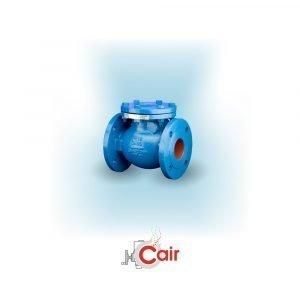Understanding the NRV Valve: Function, Types, and Applications

The world of industrial valves is vast and diverse, with each valve serving a specific purpose. In this blog, we will focus on the NRV (Non-Return Valve) and explore its function, types, applications, factors to consider when choosing one, as well as maintenance and troubleshooting tips. Whether you're a seasoned engineer or just starting to learn about valves, this comprehensive guide will provide you with valuable insights into the world of NRV valves.
What is an NRV Valve and How Does It Work?
The NRV valve, also known as a check valve or one-way valve, is a mechanical device that allows fluid or gas to flow in only one direction, preventing backflow. It operates based on a simple principle: when the fluid or gas flows in the desired direction, the valve opens, allowing the passage. However, when the flow tries to reverse, the valve closes, effectively blocking the backflow.
Types of NRV Valves and Their Features
There are various types of NRV valves available, each designed to suit different applications and environments. Some common types include swing check valves, lift check valves, and diaphragm check valves. Swing check valves utilize a hinged disc that swings open and closed, while lift check valves utilize a piston or a ball to lift off the seat. Diaphragm check valves, on the other hand, use a flexible diaphragm to control the flow. Each type has its own set of features and advantages, and choosing the right one depends on factors such as flow rate, pressure, and compatibility with the fluid or gas being handled.
Applications of NRV Valves in Various Industries
NRV valves find widespread applications in numerous industries. They are commonly used in water and wastewater treatment plants, oil and gas refineries, chemical processing plants, power generation facilities, and many more. In water treatment, NRV valves help maintain the flow in a single direction, preventing contamination. In refineries, they prevent the backflow of harmful gases or fluids that could damage equipment. Understanding the specific requirements of each industry is crucial for selecting the most suitable NRV valve for a given application.
Factors to Consider When Choosing an NRV Valve
For a given application, choosing the best NRV valve necessitates careful consideration of a number of parameters. These include the flow rate, pressure rating, temperature range, material compatibility, installation orientation, and maintenance requirements. Additionally, factors such as the type of fluid or gas being handled, the presence of particulates or corrosive substances, and the overall system design should also be taken into account. By thoroughly evaluating these factors, engineers and technicians can ensure optimal performance and longevity of the NRV valve.
Maintenance and Troubleshooting Tips for NRV Valves
To ensure the reliable operation of NRV valves, regular maintenance is essential. This involves periodic inspection, cleaning, and lubrication of the valve components. It is crucial to follow the manufacturer's guidelines for maintenance intervals and procedures. Additionally, troubleshooting common issues such as leakage, stuck valves, or improper sealing can help identify and rectify problems promptly. Understanding the causes of these issues and implementing appropriate corrective measures can extend the lifespan of the NRV valve and prevent costly downtime.
Conclusion
NRV valves play a vital role in various industries by preventing backflow and ensuring the smooth operation of fluid and gas systems. Understanding the function, types, applications, and factors to consider when choosing an NRV valve is essential for engineers, technicians, and anyone involved in valve selection and maintenance. By selecting the appropriate NRV valve based on the specific requirements of the application, considering factors such as flow rate, pressure, and material compatibility, optimal performance and longevity can be achieved.
Regular maintenance and troubleshooting are crucial for the reliable operation of NRV valves. Following the manufacturer's guidelines for maintenance, conducting periodic inspections, and addressing common issues like leakage or stuck valves are important steps to ensure the continued functionality of the valve. By implementing these maintenance practices, industries can minimize downtime, prevent system failures, and optimize the overall efficiency of their operations.
In conclusion, NRV valves are indispensable components in many industries, contributing to the safety, reliability, and efficiency of fluid and gas systems. By understanding their principles, selecting the right type for specific applications, and maintaining them properly, industries can harness the full potential of NRV valves and enjoy seamless operations while safeguarding their equipment and processes.
Post Your Ad Here
Comments